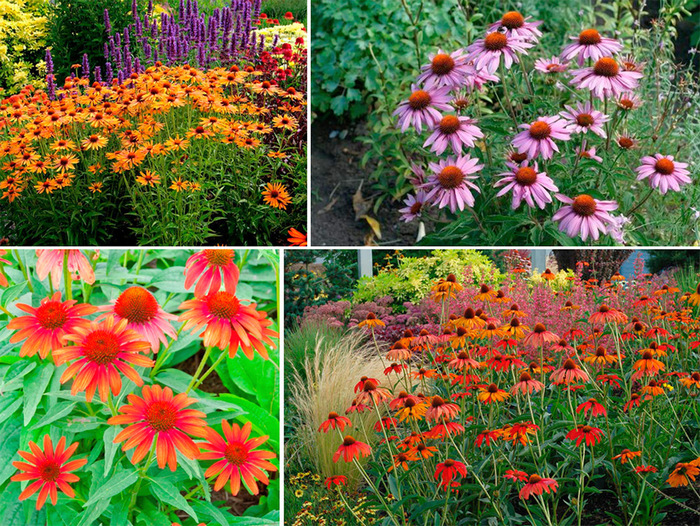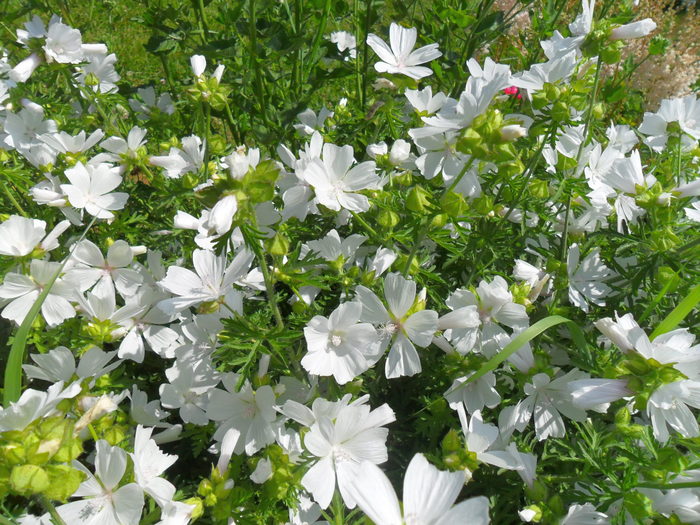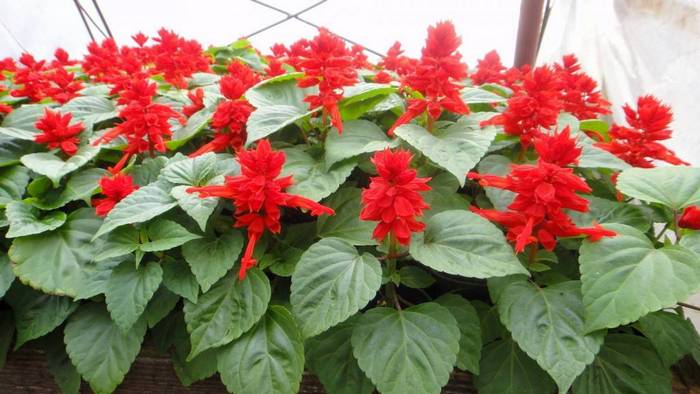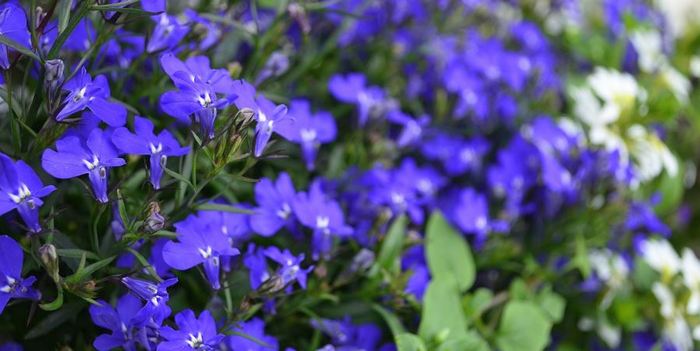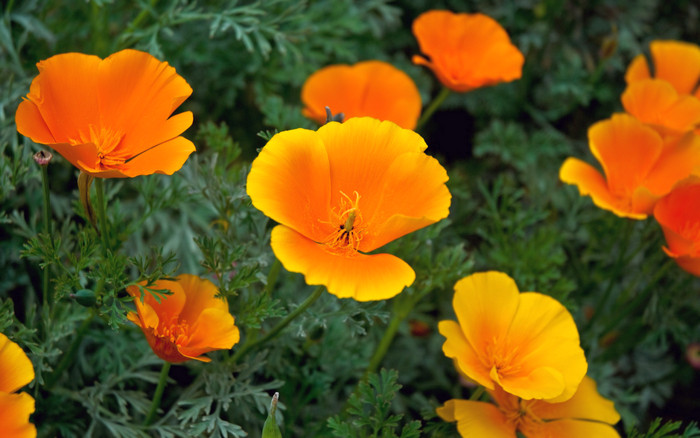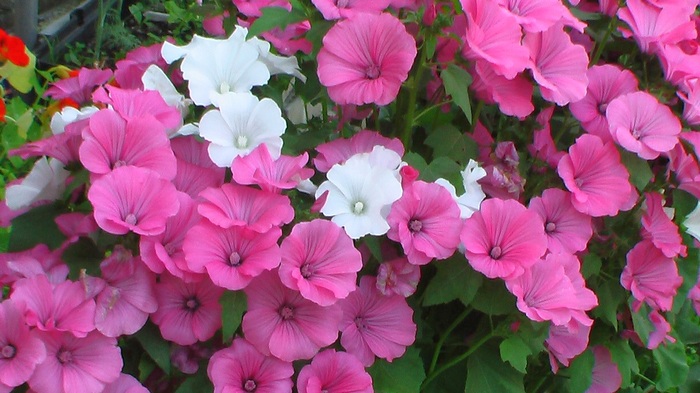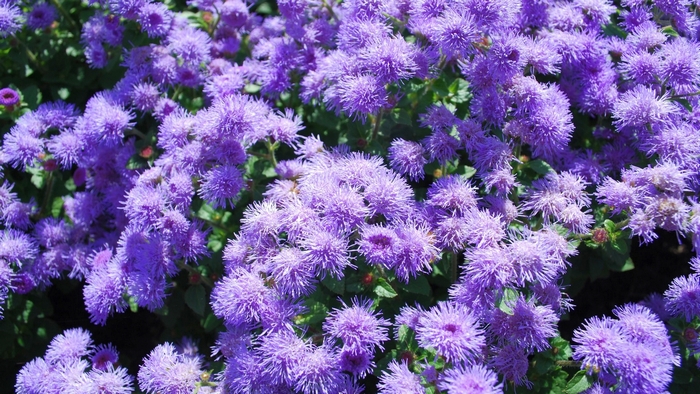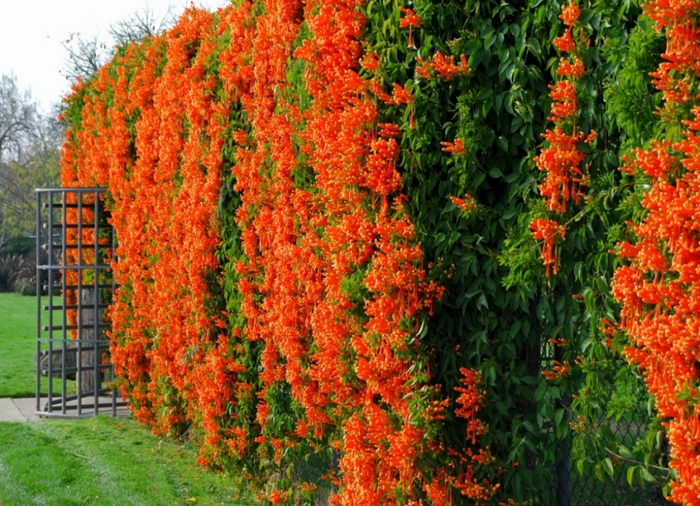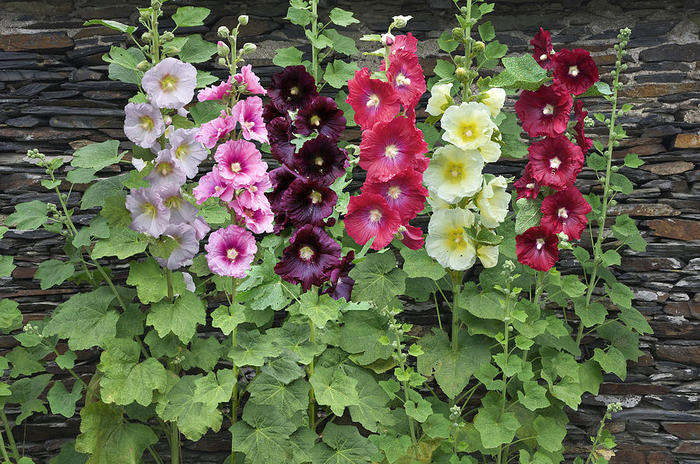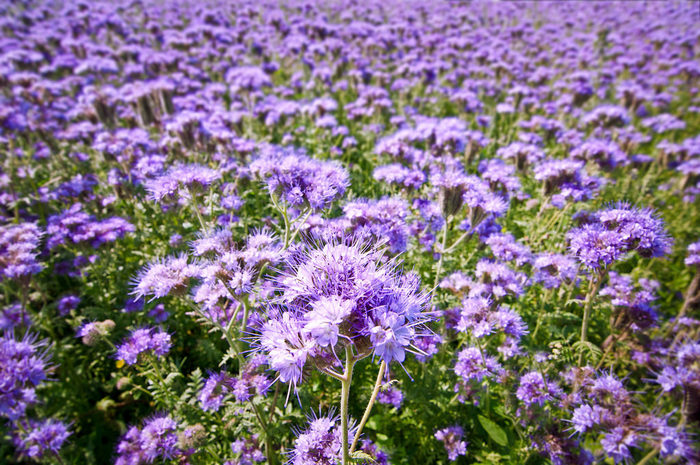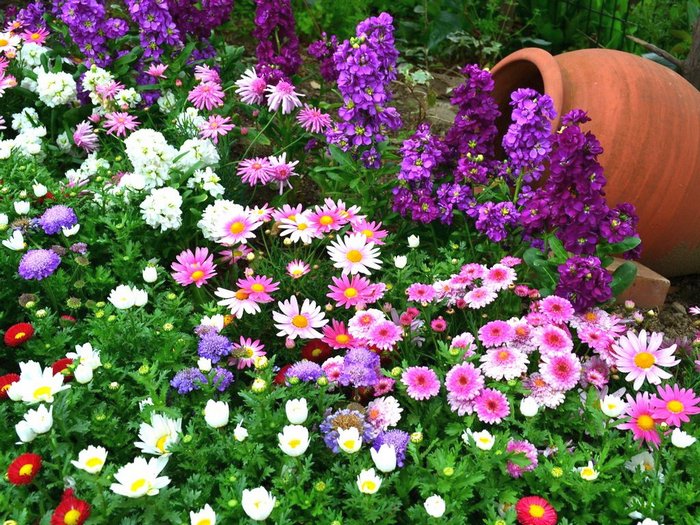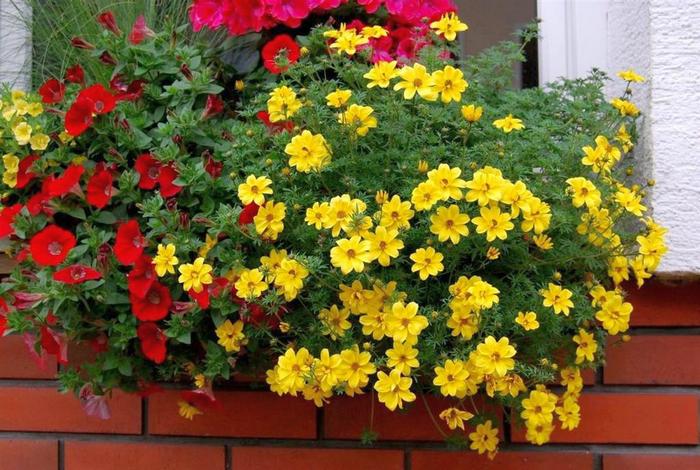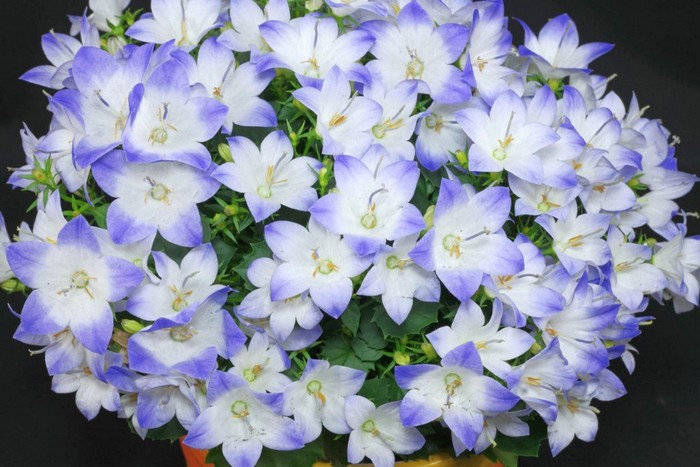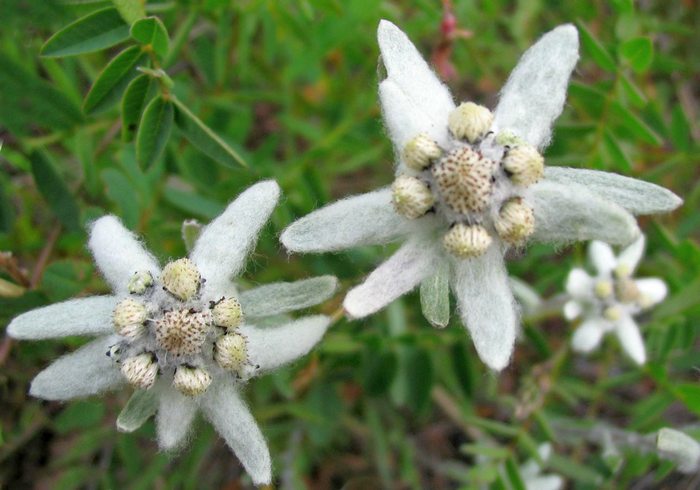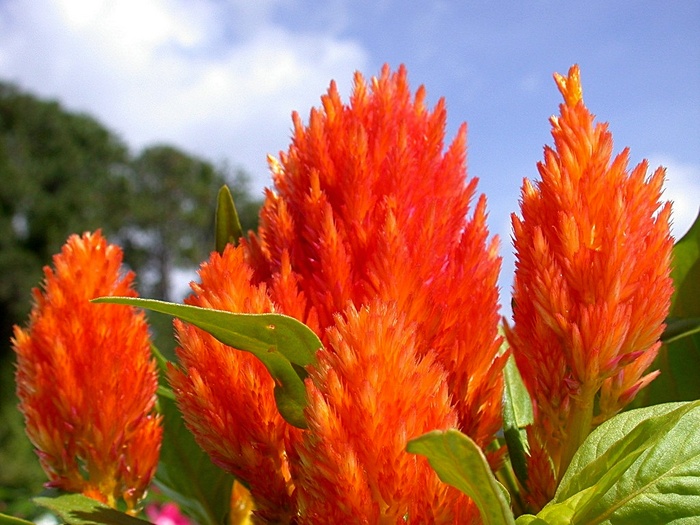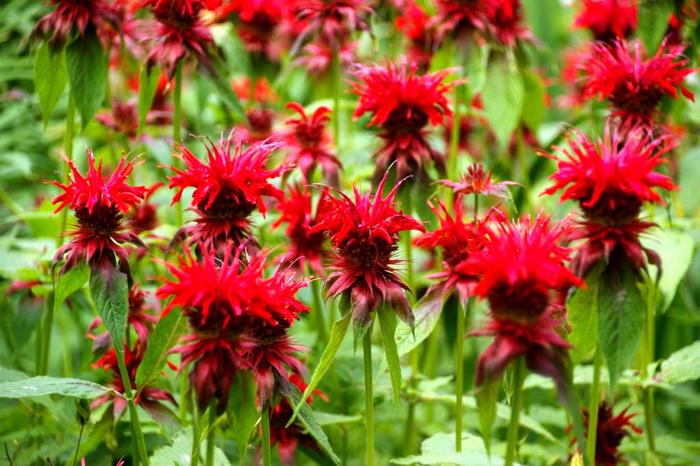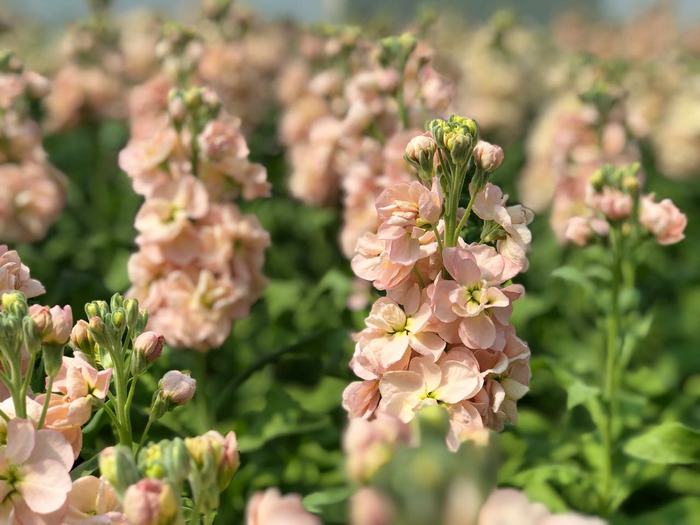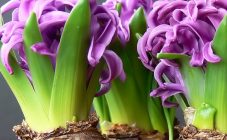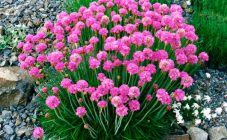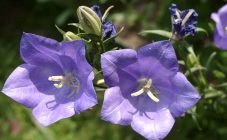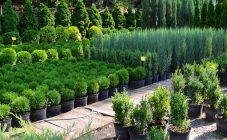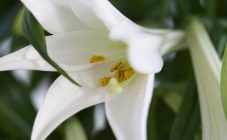Content:
Garden flowers in flower beds will decorate the local area. It is preferable to plant perennial flowers for the garden, which does not require annual replanting or additional seeding.
Perennial garden flowers
Delightful color combinations for the garden will allow you to create masterpieces in the country. There are many varieties of perennials for the garden.
Perennial flowers for the garden have a number of advantages:
- flower beds do not have to be replanted for several years;
- preservation of a beautiful appearance during the summer season;
- most species are winter hardy;
- developed roots provide earlier flowering compared to annual crops;
- reduction in cash costs due to the absence of the need to buy seed every year.
They plant perennials:
- division of rhizomes;
- seeds;
- onions.
Perennial long flowering plants in a flower bed, the selection of which is not
will be difficult, will delight in the summer. Constantly on sale varieties that differ in flowering period. For some flowers, the peak of decorativeness begins with the arrival of summer and lasts until October.
By plant height
Garden perennials are divided into the following categories, depending on the height:
- undersized - up to 0.5 m;
- medium - 0.5-0.8 m;
- tall - above 1 m.
Flowering time
It is easy to purchase perennials for spring, summer and fall in seed shops. The created flower beds will bloom beautifully from March until the very frost. When daffodils or tulips wither, they are replaced by lilies or phloxes. Then it is the turn of the autumn parade of colors, which is represented by gypsophila and helenium.
In the sun or in the shade
When planting unpretentious perennials, they adhere to certain requirements. For example, ground cover perennial plants (saxifrage and periwinkle) feel great on an alpine slide. And the shade-loving astilbe or host does not like a rock garden. Rogers is considered the real queen of the shadow.
Characteristics of species and varieties of crops
Monochrome gardens look attractive and are very popular with flower growers.
White tone in garden decor visually enhances the space. Crops with white flowers are attractive against the backdrop of rich green leaves, enlivening the garden at night. Areas of the garden, which are intended for relaxation, are embellished with perennial plants with white inflorescences, creating a lunar corner.
Spring perennials:
- daffodils and muscari;
- tulips and lilies of the valley;
- primrose and woodlands.
Summer perennials:
- delphinium and irises;
- Nivyanik and Volzhanka;
- peonies.
Autumn perennials: astilbe, hydrangea, bush aster.
Crops with unusual foliage: large-leaved brunner, hosta.
The green lawn emphasizes the splendor of the red plant. The intense purple-red color of the leaves emphasizes the flower bed. Unpretentious crops are popular with gardeners:
- coleus and highlander small-headed;
- alternantera and oxalis;
- amaranth and irezina herbst;
- sour hibiscus.
The blue tone has a calming effect. It creates comfort and harmony. Helps you to relax and dream about relaxing on the sea beach.
- African lily and ageratum;
- Lesser periwinkle and aconite;
- Heliotrope and Veronica Dubravnaya;
- Spring gentian and morning glory;
- Iris and crocuses;
- Lavender and Lobellia.
As a rule, orange colors symbolize optimism and cheerfulness, in addition, in a warm environment, yellow and red qualities grow.
According to psychologists, the choice of orange in landscape design remains with an enterprising and successful person.
Fiery shades go to the garden plot: add dynamism and bring positive.
With the onset of spring, bright lights of imperial hazel grouses, tulips, and primroses, in the summer season, attract:
- marigolds and daylilies:
- nasturtium and irises;
- zinnias and calendula.
With the approach of autumn, bush plants delight the eye: chrysanthemums, dahlias, gladioli.
Gardeners choose orangeperennials:
- swimsuit;
- marigold;
- sanitation;
- erantis;
- Adonis;
- helenium.
Perennials with pink flowers will decorate the garden. Plants for flower beds are selected according to flowering periods: in spring, autumn, summer.
Spring flowering pink plants:
- the bleeding center is magnificent and the saxifrage is thick-leaved;
- primrose polyantha and phlox subulate.
Summer flowering rose crops:
- carnation herbaceous and large-flowered incarvillea;
- pyrethrum pink and sedum false;
- white ash and creeping thyme.
Autumn growing pink flowers:
- aster shrubby and American;
- Korean chrysanthemum and autumn crocus.
Blue garden flowers
The complexity of the compositions and the multi-tiered landscapes are explained by their presence. Minimalism in care and the ability to decorate a flower bed for a long time - that's why they give the central place to a blue or strict flower with a blue color:
- flax and aquilegia;
- blue carnation and shave;
- lupine and Siberian iris.
Plants will compete with the lilac branch, which differ in the tenderness of color. Lilac flowers will revive the flower garden during the summer season, these are:
- Allium bow and phlox;
- lavender and aquilegia;
- hydrangea and irises.
Perennial garden poppies
The flowering perennials have elegant flowers. The orange-red plant is great for group plantings. Gardeners have loved culture since the days of ancient Rome.
Garden vines are used in the decor of summer cottages because of their spectacular appearance, unpretentiousness, and the ability to curl along the walls. They are fruit and ornamental. To the demanded perennial vines for the garden include:
- climbing rose;
- curly grapes;
- ivy;
- honeysuckle;
- clematis.
They require shelter for the winter.
When a flower garden is laid out in a circle, the main inhabitants are tall, long-flowering plants. In the front garden, perennials are also irreplaceable: stockrose, meadowsweet, toothed buzulnik, mallow, purple steep, foxglove, Jerusalem artichoke.
Among honey plants, they are distinguished as annuals and perennials that grow in the garden:
- lavender and rose;
- sunflower and geranium;
- sedum and purpurea echinacea;
- heliotrope and snowdrop;
- catnip and moranda;
- sage and daylily hybrid;
- crocus and kosmeya;
- chives and skoroda;
- Gaillardia and buddleya.
Adorable summer flowers decorate the local area. Suitable for planting along paths, for mixborders and flower beds, landscape corners. Both annual and perennial crops are used.
Today it is fashionable to decorate with flowers balconies and terraces, patios and gazebos, openings of windows and doors. Flowers are planted in baskets, containers and pots. The layout of verbena, petunias and dichondra looks original for decorating retaining walls.A composition of pelargonium with a reddish tint, coupled with white petunia or a string, a combination of tuberous begonias in lemon tones and blue lobelia, a mixture of fuchsia and lobelia, which hang from a flowerpot, will fit perfectly into the interior of the house.
Suitable for single plantings in pots:
- bidense and petunia;
- bacopa and nasturtium;
- diastia.
Poisonous garden flowers
Graceful and beautiful bushes and flowers sometimes hide the danger if, inadvertently, you try poisonous buds or foliage. Besides dope, nsafe for humans:
- rhododendron and lilies of the valley;
- common daffodil and hydrangea;
- oleander and foxglove;
- larkspur and poinsettia;
- colchicum and mountain laurel.
Decorative flowers for the garden
The foundation of a garden plot is decorative flowers. Plants determine the color of the cottage, aroma and atmosphere.
Decorative horticultural crops add an extra charm to understated beauty:
- nemesia and tuberose;
- gutchinsia and verbascum;
- cineraria and osteospermum;
- godetia and Shabo carnation;
- hellebore and cotton wool;
- snapdragon and levkoy.
Popular flowers
Yarrow flower garden
For yarrow are characteristic:
- unpretentiousness;
- colorfulness of inflorescences: pink, white, orange, yellow;
- flowering duration: beginning in June, ending with the onset of winter.
Campanella - garden flower
Campanella is often met in the yard, in the greenhouse or on the window. Florists who properly care for perennials turn the culture into a luxurious cascade of bells.
Dope
The herbaceous perennial plant belongs to the Solanaceae family. In the conditions of central Russia, it is grown as an annual.
Distinctive features of the culture: toxicity and large tubular flowers. Datura grass scares away flower growers, so it is one of the rare guests in the garden.
Edelweiss
A fragile culture with small flowers that attracts the eye with snow-white pointed petals. The plant is in perfect harmony with bright and luxurious flowers.
Lakonos
An unusual perennial native to the tropics. The drought-resistant shrub has taken root in Russia. The flowering period is June-August. White inflorescences resemble chestnut candles. Purple berries surprise with decorativeness almost until winter.
Fox tail flower garden
Akalifa bristly refers to decorative flowers from the Euphorbia family. Other names are foxtail or fox tail. Afraid of frost, dies during sudden temperature changes. It is inappropriate to cultivate a perennial in an open area. Akalifa is grown as a houseplant in the middle zone of Russia. Decorate balconies, loggias, apartment windows.
Heuchera garden flower
Another name is spotted geranium. Perennial delights with foliage color palette:
- green and gray;
- cream and silver;
- purple and brown;
- burgundy and a combination of shades.
Garden flower monarda
A winter-hardy perennial is indispensable in a group planting in a sunny and semi-shady flower bed. Dried flowers are propagated by dividing rhizomes. Prized for its spicy taste and medicinal properties.
The herbaceous perennial has been used by the Indians since ancient times as a medicine and spice, as well as for garden decoration. The peak of decorativeness is in July-August. Inflorescences are white and pink, purple and red.
Calibrachoa
Distinctive features of micropetunia: lush flowering, no need for intensive watering. Propagated by cuttings and seeds. Grown as an ampelous plant in hanging pots on loggias.
Mattiola
The height of mattiola bicorn, or night violet, ranges from 30 to 60 cm. The amazing aroma of a fragrant garden flower intensifies with the approach of bad weather.
The tasks of caring for perennial garden flowers are to preserve beauty and continue the flowering period. The implementation of agrotechnical procedures (pruning, removal of dried flowers and leaves, dead sections of branches) is aimed at protecting against phyto-diseases.
Removing wilted flowers
It is advisable to combine the cutting of wilted flower stalks with watering, loosening and replenishing the soil. The effectiveness of such care is to stimulate the formation of new buds and stems. Otherwise, seeds and fruits will develop from wilted flower stalks, and the culture will concentrate its strength during maturation.
Support for large-flowered crops
Tall plants should be tied to a support in the presence of heavy inflorescences: peony, larkspur. Thin, however, reliable poles made of bamboo, metal or wood are suitable for support.
Maintaining the shape of flowers
Individual crops fall apart as they grow. It refers to:
- phlox and peonies;
- asters, coreopsis and more.
Plants need support to maintain their shape. It is required to stick several poles near the culture and tie the frame with twine. Shop supports can be very decorative. Supporting rings with an adjustable diameter turn out to be practical.
Turning flowers into weeds
If wild growth blocks oxygen to other crops and displaces them, you will have to regularly remove shoots. Often, shrubs that reproduce by branches creeping along the ground, as well as spreading pillow-shaped perennials, are the culprits. In this situation, garden shears or a shovel are appropriate to get rid of unwanted guests.
Garden flower pots handmade
Decorative flowerpots made of ordinary material look original. The main thing is ingenuity and imagination. Do-it-yourself flower pots will bring a zest to the courtyard.
Reanimation of old things
To make the flower garden unique, use old, worn shoes:
- sneakers and sneakers;
- boots and cloaks;
- boots and galoshes.
Technological process:
- Black soil is poured into the bottom of the shoe, then seed or seedlings are planted.
- Watering is carried out with lukewarm water and a decorative flower garden is placed in a conspicuous place.
- Creating an attractive look requires changing the color of boots or galoshes.
Tin can miniature bed
A popular base for flower pots is tin cans. A variety of shapes, sizes, shades allows you to make a unique flower bed. The advantage of the composition is the minimum time and effort required and the maximum creative result.
For work you will need:
- banks;
- acrylic paints;
- nails,
- wooden stand for fixing cans.
To give a certain shape to objects, cans are repainted in catchy tones.
How to make:
- To drain excess moisture, holes are made in the bottom of the container.
- The jars are attached to the base, filled with a substrate and the plants are planted.
- Landing containers are decorated with patterns or ribbons along with buttons, sequins, beads.
Description of garden plants: succulents and lianas, monochrome plants, honey plants, popular crops, will help summer residents create a paradise on their site.

